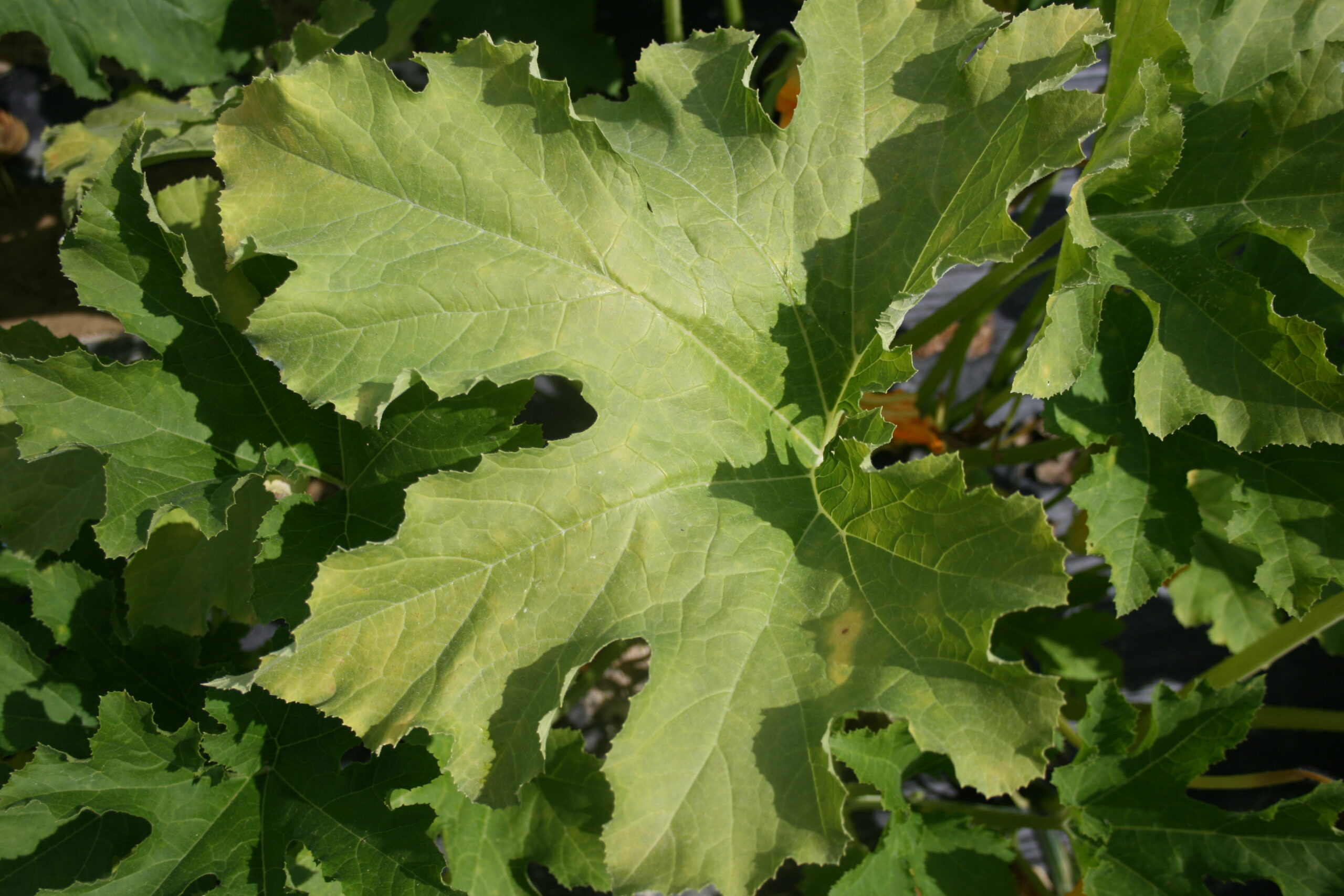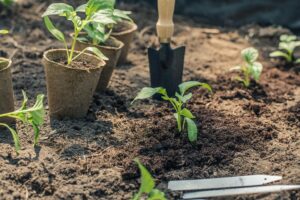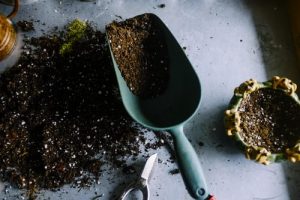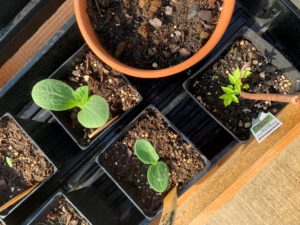Nitrogen is one of three primary macronutrients plants need to survive. A lack of this vital nutrient can, among other things, disrupt the production of chlorophyll, cause defoliation, and ultimately lead to plant death. While it is helpful to know how to remedy this type of deficiency, it is also important to learn what causes the problem so it can be avoided altogether. With that in mind, here are the top ten causes for nitrogen deficiency in soil and plants.
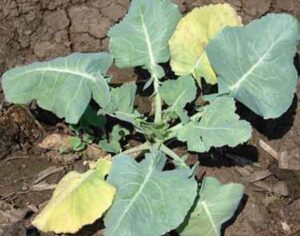
Top 10 Causes of Nitrogen Deficiency
1. Crops With High Demand
Certain crops have a higher demand for nitrogen than others. For example, brassicas, like broccoli, Brussels sprouts, cabbage, cauliflower, radishes, turnips, and kohlrabi require more of the macronutrient than crops like okra, beets, sweet potatoes, and carrots. As a result, high demand crops can deplete the soil of available nitrogen. This is especially true if nitrogen-hungry crops are planted in the same location for consecutive seasons without replenishing the soil. What’s more, container gardens are more prone to such depletion since plant roots have a limited amount of soil from which to draw nutrients.
The solution for growing vegetables with high nitrogen demands is to practice crop rotation and replenish the soil as needed each growing season.
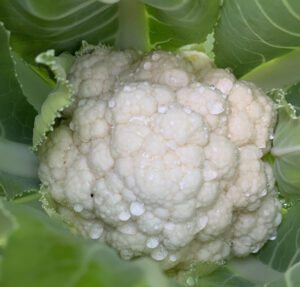
2. Excessive Watering or Rain
Nitrogen is soluble, meaning it can be washed out of the soil by excessive watering or rain. Of course, we cannot control the weather, but we can pay attention to how we irrigate plants, taking care not to overwater them.
This article contains affiliate links. If you make a purchase using one of these links, I will receive a very small commission at no additional cost to you, and it will help me maintain this website. Rest assured, I only recommend products I actually like!
3. Insufficient Watering
While overwatering can be a source of nutrient loss, insufficient watering can also cause a problem. A lack of moisture in the soil can hinder roots from taking up necessary nutrients to be used by the plant. A good rule of thumb is to water plants when the soil is dry to the touch at a depth of about one inch. Another option is to use a soil moisture meter to test the soil moisture level.
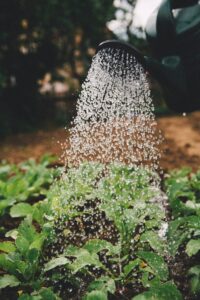
4. Soil Composition
Poor soil composition can be another cause of nutrient deficiency. Some garden soils naturally contain more nutrients than others. Of the four basic types of soil– clay, loam, sand, and silt–sandy soil contains the least amount of nutrients needed for plant life. (You can learn more about soil types in this helpful article.) Fortunately, there are simple soil tests you can perform to determine the type of soil you have. You can learn more about how to test your soil type and how to improve it for optimal nutrition in this article.
5. Diseased or Damaged Roots
Roots with conditions such as root knot nematodes, club root disease, or root maggots, can be another reason plants experience a nutritional deficiency. Diseased or damaged roots are unable to access or transport nutrients that are available in the soil resulting in a deficiency in the plant.
6. Improper Soil pH
Soil pH can play a role in nutrient deficiencies. While there may be adequate nutrients present in the soil, they may not be bioavailable if the soil pH is at an improper level. The ideal soil pH for nitrogen uptake for most vegetables is between 6.5 and 7.5. Anything below 6 or higher than 8 can be problematic. This is not the case, however, for plants that thrive in either a low (acidic) or high (alkaline or base) soil pH. You can perform a simple test to determine the pH level of your garden soil. This is the test kit I use but you could also use a soil pH meter. You can learn more about the importance of growing plants in the proper soil pH in this helpful article.

7. Imbalance of Other Nutrients
An imbalance of other macronutrients like potassium, for example, or micronutrients like chloride, zinc, or manganese, can negatively impact nitrogen uptake. In other words, there may not be a true nitrogen deficiency in the soil, but simply an unhealthy abundance of other nutrients that make it difficult for the plant to access needed nitrogen. This is less often the source of nitrogen deficiency, but if you have ruled out other potential causes you can send a soil sample to your local county extension agent and request a complete soil analysis that will include all nutrients.
8. Too Much Carbon in the Soil
When carbon, a non-mineral nutrient, is found in excess in the soil, microorganisms will use the available nitrogen to break it down, in effect, robbing plants of the nitrogen they need to grow. Thus, it is important when composting carbon-rich material, like sawdust, to allow it to fully compost before adding the compost to your garden.
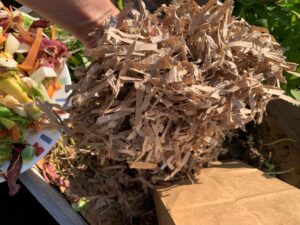
9. Overcrowding of Plants
Sometimes an overlooked source of nitrogen depletion can be the overcrowding of plants. Whether you are growing plants in rows, beds, or containers, it is important to properly space the plants so that they do not have to compete for nutrients from the same space.
10. Low Soil Temperature
Another factor in nitrogen uptake is soil temperature. Low temperatures render microbes less active, thereby reducing the uptake of nutrients. What’s more, low soil temperatures impede the uptake of water, further hindering nutrient absorption and photosynthesis.
Low soil temperature tends to be more of an issue in the early spring when the soil is still warming up from cooler nights. You can find out the soil temperature by using a soil thermometer. Doing so will help prevent you from transplanting new plant starts too early and thus avoid nitrogen deficiency. (Learn more about soil temperature and planting seeds in this helpful article!)
Now that you know the top ten causes of nitrogen deficiency, you can take the necessary steps to ensure your plants get the nutrients they need.
Thank you for reading this article! If you found it interesting or helpful, please consider sharing it with others via email and social media!
